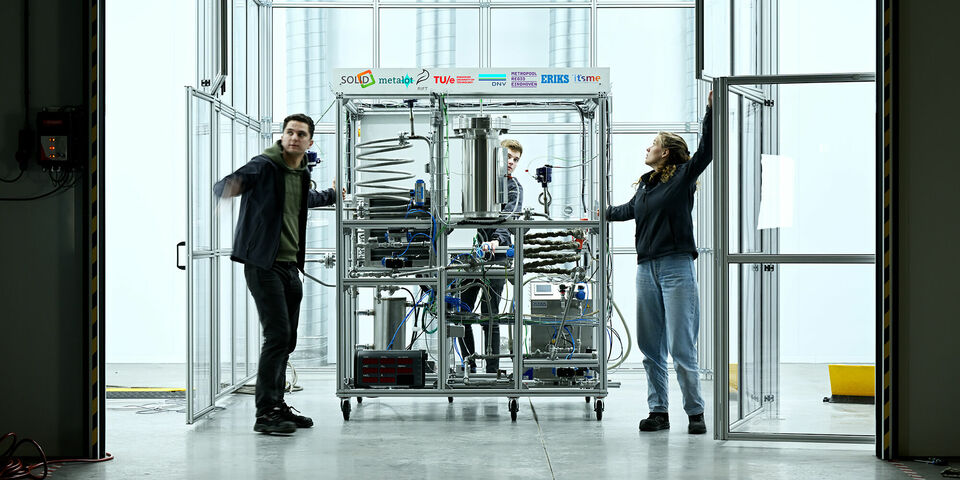SOLID launches alternative technique for safe hydrogen storage
Student team SOLID developed an iron-based hydrogen storage and transportation technique. The prototype containing this technology was dubbed SIR One – short for Steam Iron Reactor One – and is capable of storing up to one kilo of hydrogen: enough for a passenger car to drive one hundred kilometers. The team plans to scale up the system further throughout the coming years.
Green hydrogen is cleaner than traditional energy. The Dutch government stimulates the production of hydrogen with a subsidy of over €800 million. But how can we store that hydrogen and use it again later? It is estimated that in the future, the Dutch central hydrogen pipeline network can only provide 30 percent of our nation’s total hydrogen demand. Energy storage and transportation is one of the major challenges of the energy transition. Traditional batteries have a limited storage capacity. The students of team SOLID believe they found a solution.
Iron for energy storage
‘Hydrogen can be stored by making it react with iron oxide, also known as rust. This forms iron and water, with the iron functioning as a medium for storage. In order to produce hydrogen, iron reacts with steam to form hydrogen and iron oxide. This creates a cycle in which iron functions as a sustainable hydrogen battery,’ it says in team SOLID’s press release. Max Winkel, team manager at SOLID: “This allows us to store and transport hydrogen in a compact way. Because of its high energy density, iron is capable of storing up to three times more hydrogen per volume than hydrogen under high pressure (700 bar), which is the most commonly used form of storage today.”
Continued development
After SIR One, the team plans to develop SIR Two, which will have a storage capacity fifteen times larger than its predecessor. SIR Two, in turn, needs to function as the basis of SIR Three: a demo-setup in the port of Rotterdam, where it can demonstrate the technology at an industrial level. The students hope to accomplish this by 2027.


Discussion